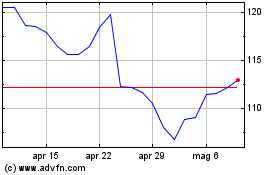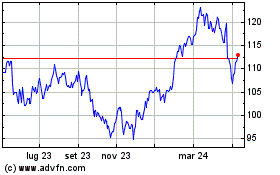Parks Canada and Canadian Pacific celebrate Canadian unity on the 125th anniversary of the driving of the last spike
07 Novembre 2010 - 9:00PM
PR Newswire (Canada)
CRAIGELLACHIE, BC, Nov. 7 /CNW/ -- CRAIGELLACHIE, BC, Nov. 7 /CNW/
- On behalf of the Honourable John Baird, Minister of the
Environment and Minister responsible for Parks Canada, Mr. Dean Del
Mastro, Member of Parliament for Peterborough and Parliamentary
Secretary to the Minister of Canadian Heritage, and Mr. Fred Green,
Canadian Pacific President and CEO, today recognized the 125th
anniversary of one the most significant moments in Canadian
history, the driving of the Last Spike, which completed the
country's first trans-continental railway. Marking this important
occasion, Mr. Del Mastro and Mr. Green hammered a symbolic spike at
Craigellachie, British Columbia, accompanied by members of the
Shuswap Nation, area mayors, local schools, and special guests from
Lord Strathcona Horse Regiment (Royal Canadians) and the Royal
Regiment of Canadian Artillery. "The Last Spike represents the
single most important construction project in the history of our
country and also the most influential in the development of
Canada's national identity. It represents the completion of the
railway and the fulfillment of Prime Minister John A. Macdonald's
promise to British Columbia to connect the province to the rest of
Canada by rail," said Mr. Del Mastro, who also noted that the CP
played a critical role in establishing Canada's first national
park, Banff, 125 years ago. As Donald Smith, later known as Lord
Strathcona, drove home the Last Spike to complete Canada's first
transcontinental railway on November 7, 1885, the country ceased to
be, in the words of Macdonald, "a mere geographic expression."
Against formidable odds, the ribbon of steel rail united the new
province of British Columbia with the more populous centres in the
East. "It is with extreme pride that I stand here with Mr. Del
Mastro on this very special day," said Mr. Green, CP's 16th
President. "This iconic event marked an important chapter in our
history, but also signalled the innovation the railway would bring
to the country over the ensuing decades. We honour the hundreds of
thousands of men and women who have worked so hard over the last
125 years to make CP and Canada what it is today. Our work
continues to make history every day - from driving the last spike
to driving the digital railway." In 2011 Parks Canada will
celebrate the 125th anniversary of both Glacier and Yoho national
parks and the 100th anniversary of the national parks service.
National parks and national historic sites represent the very best
that Canada has to offer. These special places contribute to
Canada's vibrant tourism industry and exceptional reputation around
the world. For additional information, please see the accompanying
backgrounder at www.parkscanada.gc.ca under Media Room and at
www.cpr.ca under Media. Video from the event is available on CNW's
Video On Demand at: http://cnw.pathfireondemand.com/main.action
Backgrounder Parks Canada and Canadian Pacific celebrate Canadian
unity on the 125th anniversary of the driving of the last spike On
November 7th, 1885, a modest ceremony was held at Craigellachie, on
the western edge of Eagle Pass in British Columbia's Monashee
Mountains. Canadian Pacific (CP) crews had been laying track in the
pass throughout the summer and fall. On that cloudy November
morning, CP director Donald Smith, later known as Lord Strathcona
and Mount Royal, drove the symbolic last spike on Canada's first
transcontinental railway. In 1971, the Historic Sites and Monuments
Board of Canada (HSMBC) officially designated the completion of
Canada's first transcontinental railway as an event of national
significance. Eagle Pass National Historic Event commemorates the
communal achievement of thousands of workers, engineers, managers,
politicians, and planners who enabled the building of the CP. Eagle
Pass, first earmarked for the railway by Walter Moberly in 1865,
was one of the last stretches of the line to be completed. In 1985,
the HSMBC installed a replacement Eagle Pass plaque at
Craigellachie. Today, the site of the Last Spike at Craigellachie
is managed by the Revelstoke Railway Museum and the BC Ministry of
Transportation. The completion of the CP Railway was undeniably a
turning point in Canadian history. It cemented British Columbia's
place in Confederation, enabled the resettlement of the West, and
had lasting impacts on everything from government policy to
individual lives. In 1871, British Columbia had agreed to enter
Confederation in part due to the promise of a railway; in driving
the Last Spike, the province was finally connected by rail to the
East. The new railway shaped relations between central and western
Canada, sheltered Canada against American expansionism, and enabled
the growth of western industries like ranching, farming, forestry,
mining and tourism. The CP also played a critical role in
establishing Canada's system of national parks. "If we can't export
the scenery, then we'll have to import the tourists," said CP's man
at the helm and chief promoter William Cornelius Van Horne who
suggested the creation of Canada's first national parks along the
CP line. As early as the 1880s, Van Horne went about promoting
western Canadian tourism. In 1885, the federal government set aside
a system of Rocky Mountain hot springs which CP workers had brought
to their attention. These springs today form the core of Banff
National Park. Other locations suggested by CP would lead to the
creation of Yoho and Glacier National Parks. For several decades,
CP was also responsible for most national park tourist
infrastructure and promotion. The vast majority of early park
visitors arrived on CP trains, and the company created effective
advertising campaigns that promoted the parks as world-class travel
destinations helping set up Canada's first national park and
building iconic CP hotels offering spa retreats, mountaineering
with Swiss guides, and elegant railway hotels. This year, Parks
Canada and Canadian Pacific celebrated the 125th anniversaries of
Banff National Park and driving the Last Spike. Next year will mark
the 125th anniversaries of both Glacier and Yoho National Parks and
the 100th anniversary of the National Parks Service. About Canadian
Pacific: Canadian Pacific (CP: TSX/NYSE) operates a North American
transcontinental railroad providing freight transportation
services, logistics solutions and supply chain expertise.
Incorporating best-in-class technology and environmental practices,
CP is re-defining itself as a modern 21st century transportation
company built on safety, service reliability and operational
efficiency. Visit CP.ca and see how Canadian Pacific is Driving the
Digital Railway. About Parks Canada: Parks Canada is a world leader
in managing protected areas and continues to work to ensure that
Canada's historic and natural heritage is presented and protected
for the enjoyment, education and appreciation of all Canadians,
today and in the future. Through a network of 42 national parks,
167 national historic sites, and 4 national marine conservation
areas, Parks Canada sets the stage and invites Canadians, as well
as people from around the world, to engage in personal moments of
inspiring discovery of our treasured natural and historic places.
Pascale Boulay, Press Secretary, Minister's Office, Environment
Canada, 819-997-1441; Jacolyn Daniluck, Public Relations and
Communication Officer, Parks Canada, Mount Revelstoke and Glacier
national parks, 250-837-7500, http://twitter.com/parkscanada;
Breanne Feigel, Manager, Communications, Canadian Pacific,
403-589-6949
Copyright
Grafico Azioni Canadian Pacific Kansas ... (TSX:CP)
Storico
Da Set 2024 a Ott 2024

Grafico Azioni Canadian Pacific Kansas ... (TSX:CP)
Storico
Da Ott 2023 a Ott 2024
